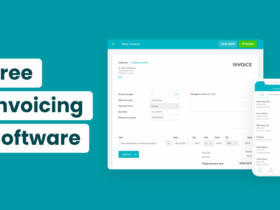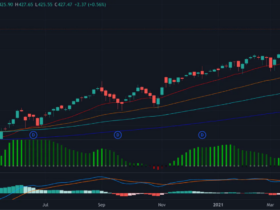What Is Meter?
Meter is DeFi infrastructure with a built-in, crypto-native, metastable currency. It functions as a highly-decentralized, high-performance EVM compatible side chain for Ethereum and other public chains. The Meter system uses Proof of Work to create a fully-decentralized, low-volatility coin MTR for fees and payments, and HotStuff-based Proof of Stake with the MTRG governance coin to validate transactions.
This hybrid consensus mechanism makes Meter fast – the system can process thousands of transactions per second, reaching finality almost instantly – and super secure. DeFi app developers can also use the highly-decentralized, HotStuff-consensus PoS chain as an EVM-compatible side chain to increase the speed and scalability of decentralized exchanges, derivative trading platforms, yield farming programs, and other DeFi apps.
| Coin Basic | Information |
|---|---|
| Coin Name | Meter |
| Short Name | MTR |
| Circulating Supply | |
| Total Supply | 66,795,590 |
| Source Code | Click Here To View Source Code |
| Explorers | Click Here To View Explorers |
| Twitter Page | Click Here To Visit Twitter Group |
| Whitepaper | Click Here To View |
| Support | 24/7 |
| Official Project Website | Click Here To Visit Project Website |
Why Meter?
Meter Your favorite Ethereum dApps don’t have to be costly to be fast and highly decentralized. Financial assets should flow freely among blockchains.
Highly Decentralized
HotStuff-based consensus allows 1000s of validator nodes, making Meter the most decentralized Layer 2 for Ethereum.
Fast & Scalable
Meter processes thousands of transactions per second and transactions are confirmed almost instantly.
Interconnected
Meter Passport allows assets and smart contracts travel and communicate across heterogeneous blockchains for the best price, liquidity and yield.
Supercharge Ethereum dApps
Meter is an Ethereum Compatible with unique enhancements. Unlike other Layer 2, DEXes build on Meter are front running/MEV resistant, fast and uncensorable.
What problems does Meter solve?
Meter solves two major problems:
- The lack of a stable, decentralized unit of account representing an established value for DeFi applications. Basically, native cryptocurrencies are too volatile to be used for frequent transactions, and stablecoins are either centralized, have limited capacity, or depend on oracles.
- Issues with scaling and interoperability of currently available blockchains. There is a need for a high-performance blockchain that is EVM-compatible but interoperable between other blockchains to help scale and move value between them.
Interoperability Solution
Meter You should be able to take your assets wherever and whenever you like. The passport is a blockchain agnostic infrastructure that helps blockchains like Ethereum, Polkadot, and exchange smart chains to connect and communicate. You can earn MTR or MTRG and help secure the Meter network by staking your MTRG in the Meter desktop wallet. Please make sure your wallet version is 1.3.1 or higher.
If you are not planning to run a validator node yourself, but delegate the stake to a validator, here’s how MTRG staking works and a step-by-step tutorial on how to do it. There is no risk involved when you delegate the stake. You will not be punished even if the validator misbehaves. However, if the validator you delegate become “jailed”, you will not be able to receive rewards until you delegate the stake to another validator.
How MTRG staking works?
MTRG staking is done via “buckets”, in which you include a specific amount of MTRG to stake. You can choose a bucket either to vote for your own validator candidate nodes (top 300 validator nodes by votes can participate in the consensus at launch) or other candidate nodes. In order to withdraw your stake, you must unbound your bucket and then wait for a period of 168 epochs (7 days) before you can withdraw.
The longer you stake, the more votes you will accrue. The accumulation rate is 5% annually based on the 7 day unbounding period. You are able to increase the bucket size. However, if you want to reduce the bucket size, you will have to unbound and completely withdraw the entire bucket.
What is MTR used for?
Meter Externally MTR can be used to make everyday payments and as a store of value. On the Meter network MTR is used for transaction payments, gas, and storage fees PoS validators receive for approving transactions.
MTR may also be converted to MTRG through a competitive bidding process. In Bitcoin the miners use their hash power to directly compete for the newly created Bitcoins. In Meter the miners first convert their hash power into mining credits (MTR) and then use the MTR to compete for MTRG. Please refer to the “On-Chain Auctions” section for more information.












































Leave a Reply